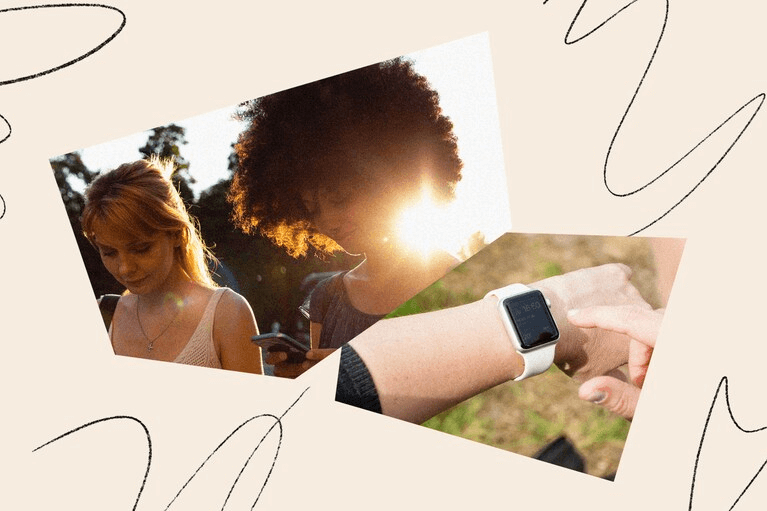Lately, there has been a developing familiarity with the significance of sunlight exposure for human well-being. From absorbing Vitamin D, daylight plays a significant part in our prosperity. Skin cancer may be caused by unusual exposure to sunlight. Sunshine health measures are needed for a healthy way of life.
Consequently, understanding and overseeing daylight exposure is fundamental for keeping a solid way of life. In this unique situation, wearable innovation, for example, smartwatches, offers a promising arrangement by permitting people to successfully screen their daylight exposure.
Exposure to Sunlight and Its Effect On the Body:
Before studying how wearable innovation tracks daylight exposure, understanding the parts of daylight and their consequences for the body is essential. For Sunshine health measures daylight comprises different frequencies, including noticeable light, bright (UV) radiation, and infrared radiation. UV radiation, explicitly UVB and UVA, is specifically noteworthy as it can enter the skin and influence human health. UVB radiation is liable for Vitamin D blend, while UVA radiation can cause skin maturing and may cause skin cancer.
Track How Much Sunshine You Are Getting:
The smartwatches we have today are furnished with sensors that can distinguish different ecological variables, including UV radiation. By utilizing these sensors, wearable gadgets can follow a singular’s exposure to daylight precisely. Sunshine health is needed and it can be tracked down using watches that can track and measure the intensity and amount of sunlight you absorb. This is the way it’s working:
1. UV Sensors:
Smartwatches are outfitted with UV sensors equipped to estimate the power of UV radiation continuously. These sensors identify both UVB and UVA radiation, furnishing clients with thorough bits of knowledge about their daylight exposure.
2. Information Conciliation:
As the client wears the smartwatch over the day, the UV sensor persistently gathers information on daylight exposure. This information is then handled by the gadget’s installed programming to ascertain the all-out length of exposure and the UV radiation.
3. Customized Bits of Knowledge:
Wearable gadgets can give customized experiences in light of individual factors, for example, skin type, area, and season of day. By examining this information, smartwatches can give proposals to clients, for example, when to look to conceal or apply sunscreen.
4. Synchronization with Health Applications:
Numerous smartwatches sync information with well-being and wellness applications, permitting clients to follow their daylight exposure closely by other well-being measurements. This reconciliation gives an extensive outline of one’s general prosperity and assists clients with coming to informed conclusions about their way of life.
Advantages of Sunlight Tracking by Wearables:
The Sunshine health Medicaid should be known by the people so they can deal with their health well. The capacity to follow daylight exposure utilizing wearable innovation offers a few advantages:
1. Monitor your Health:
By observing daylight exposure, people can all the more likely comprehend their UV exposure levels and go to proper lengths to shield their skin from harm. This proactive methodology can assist with decreasing the sun burns, untimely maturing, and skin disease.
2. Optimize Vitamin D in Your Body:
Daylight is fundamental for Vitamin D optimization, which assumes a critical part in bone health and resistance capability. By following daylight exposure, people can guarantee they are getting sufficient daylight to meet their Vitamin D necessities without overexposing themselves to unsafe UV radiation.
3. Personalized Proposals:
Wearable gadgets can give customized suggestions in light of individual variables, for example, skin type and area. These proposals assist clients with settling on informed conclusions about when to look for concealment, apply sunscreen, or change their open-air exercises.
4. Social Bits of Knowledge:
Tracking sunlight data can give significant experiences into individual ways of behaving, for example, time spent outside and favored open-air exercises. This data can be utilized to distinguish drifts and energize better way-of-life decisions.
Difficulties and Restrictions:
While wearable innovation offers promising answers for following daylight exposure, a few difficulties and restrictions should be tended to:
Accuracy, User Compliance, Privacy Concerns:
The precision of UV sensors in smartwatches may change relying upon elements like sensor adjustment and natural circumstances. Guaranteeing the exactness of daylight exposure information is essential for giving solid bits of knowledge to clients.
For daylight following to be powerful, clients need to wear their smartwatches reliably and effectively draw in with the following highlights. Empowering client consistency and adherence to daylight exposure suggestions is fundamental for accomplishing positive well-being results.
Gathering and putting away daylight exposure information raises protection concerns concerning the utilization and sharing of individual well-being data. Designers should execute hearty security measures to safeguard client information and guarantee consistency with protection guidelines.

Wrapping Up:
Wearable innovation holds incredible potential for following Sunlight exposure and advancing ambetter sunshine health and better ways of life. By utilizing UV sensors and progressing investigation, smartwatches can give clients significant bits of knowledge about their UV exposure levels and present customized suggestions for sun insurance. The type of wearables enable people to arrive at informed conclusions about their daylight exposure. Tracking the sunlight using watches addresses a critical stage towards advancing generally speaking prosperity and decreasing health risks.
